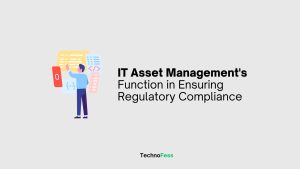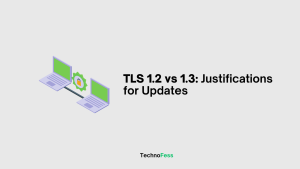Maintaining your systems’ flawless operation requires an art form of log management, not just a duty. This article serves as a guide to help you comprehend and select the top log management solutions available. We will go into practical applications and explain their importance to anyone working in technology rather than merely discussing theory. The appropriate tool can be the difference between preserving your data and maximizing system performance.
Comprehending Log Management
Have you ever wondered how computer experts monitor the state of their systems? Log management can help with that. Maintaining your logs is similar to keeping a thorough journal of all the things your system does. The foundation of system monitoring is log management, which records data occurrences and notes mistakes. Log management is important in tech contexts, even with its complexity. If your automobile didn’t have a dashboard, you wouldn’t be able to tell what your speed or fuel level was. Similar to this, log management serves as your dashboard in the tech realm. It is necessary for maintaining system health, guaranteeing security, and diagnosing issues. For instance, your log management program can assist you in determining the cause of a server crash. Log monitoring solutions, however, may do more than troubleshoot problems; they can also proactively avoid problems and ensure that your IT environment functions like a well-oiled machine.
Crucial Elements of Log Management Software
It’s only natural for you to go toward the more well-liked log management tool selections, but there are better methods to choose from. You should be aware of the particular qualities your tech environment requires and take them into account when making decisions. With the correct tool and functionality, log management may become a reliable and powerful resource instead of a tedious chore you normally avoid. Let’s now examine the characteristics that set apart a log management tool.
Alerts and Real-time Monitoring
Consider real-time monitoring, like having a watchful guard on duty at all times. This feature guarantees that you’ll be the first to know when there’s a problem, no matter how big or small. Your system uses alerts to let you know when something is interesting. They help you stay ahead of the game by enabling you to act quickly when necessary.
Performance and Scalability
Your log management tools ought to advance alongside you. Managing the growing number of logs while your system grows is the essence of scalability. Performance, on the other hand, ensures that your tool doesn’t lag when you use more data. A tool that is just as rapid and effective on day 1000 as it was on day 1 is what you need.
The ease of use and user interface
Have you ever attempted to operate a device with a handbook thicker than a novel? We can all agree that it’s not enjoyable. The most effective log management solutions have user-friendly interfaces that are simple to use and comprehend. It should be possible to complete the task without requiring a doctorate in the instrument itself. Less time spent scratching your head and more time spent understanding your data is possible with an intuitive UI.
An Evaluation of the Top Log Management Programs
There is no one-size-fits-all set of log management solutions. Every instrument has a special set of advantages and can be used in various settings and situations. Let’s examine some of the leading companies in the industry and emphasize the unique qualities of each. Keep in mind that the ideal log management software for you will rely on your unique needs, such as managing large datasets, guaranteeing fast performance, or providing intuitive user interfaces.
1. Splunk
The Swiss Army knife of log management is Splunk. It is well known for its strong data processing abilities and is capable of handling enormous volumes of data with ease. It is especially well-liked because of its sophisticated analytics, search, and visualization capabilities, which combined make it perfect for larger businesses. Splunk is the best option if you want to transform your data into insights that can be put to use.
2. Kibana, Elasticsearch, Logstash, and ELK Stack
The ELK Stack is a sophisticated yet affordable log management solution that combines three open-source log management tools. Kibana provides a visual representation of the data, Logstash processes the data, and Elasticsearch manages the search and analysis. For individuals who enjoy personalization and possess the technical know-how to modify their configuration, this trio is ideal.
3. Infodog
You should always turn to Datadog if you’re interested in cloud-scale monitoring. With a focus on cloud infrastructure, Datadog easily connects with a range of cloud services. Because of its user-friendliness, less technical team members can also use it, in addition to engineers. Datadog excels at giving you real-time dashboards and notifications so you can stay on top of things.
4. Graylog
The streamlined approach to log management that Graylog takes to be unique is particularly noteworthy in terms of its efficiency and simplicity. For anyone who chooses usability over functionality, it’s an excellent choice. Graylog is well-known for its powerful yet approachable interface, which enables teams of all technical backgrounds to analyze log data. It is very good at managing logs centrally and provides instantaneous analysis and fast search. Graylog makes it easier for medium-sized to large-sized enterprises to extract the most value from their log data.
Including Log Management Software in Your Process
It can be similar to adding a new team member to an already cohesive group when you incorporate a new log management solution into your current workflow. It’s important, but it must be carried out correctly. Let’s go over some methods and pointers for integrating these technologies into your IT ecosystem.
Integration Techniques
Consider integration as creating a link between your newly developed tool and current systems. Recognize the needs and compatibility first. Making sure a new tool integrates well with your existing configuration is just as important as just plugging it in. To help your staff adjust smoothly, consider implementing the integration gradually, starting small and working your way up.
How to Get the Most Out of Your Log Management Software
After integration, it’s time to maximize your tool’s capabilities. Get acquainted with every function; you may be astonished by the undiscovered benefits that might boost productivity and save time. Remember that a tool is only as good as the people who use it, so make sure your staff is properly trained. Review its performance frequently and be willing to make changes. Recall that the objective is to transform your log management tool into an efficient and insightful machine.
Upcoming Developments in Log Management
Staying ahead in the ever-changing tech industry requires keeping an eye on what’s coming up next. The same applies to log management. Let’s explore the cutting edge inventions and developing technologies that are influencing log management in the future. Knowing these trends guarantees that your log management approach stays solid and forward-looking while also preparing you for impending changes.
New Innovations and Technologies
In the realm of technology, artificial intelligence (AI) and machine learning (ML) are revolutionizing every industry, and log management is no exception. They are revolutionizing the way we understand and analyze large-scale datasets, resulting in more intelligent and effective procedures. Consider artificial intelligence (AI) as a knowledgeable analyst who is always learning from your data to offer better insights and identify possible problems before they happen. AI is like this.
Getting Ready for the Future
Having an agile mentality is necessary to adjust to these developments. Keep up with the latest advancements in the world of log management. Participate in tech forums, see industry leaders, and attend webinars. However, being knowledgeable is only one aspect of it; another is being open to change. This entails selecting scalable and flexible tools and procedures. Consider the long term and be adaptable when developing your log management strategy, ensuring that your plan changes as quickly as the technology does.
In summary
To sum up, everybody working in the computer industry should become proficient with log management system technologies. As you continue to optimize your systems, keep in mind that a strong server infrastructure is necessary for efficient log handling. A Linux virtual private server can help with that. Your log management tools will function much better on a Linux VPS since they provide control, flexibility, and stability. A Linux VPS is the ideal ally for any log management approach due to its capacity to maintain huge datasets and execute intricate analyses with ease.
FAQ
A log management tool: what is it?
An extremely helpful aid, a log management solution continuously gathers, examines, and stores the logs from your computer systems and applications, making it simpler to handle and go over them.
Which open-source log management program is helpful?
The well-known open-source trio ELK Stack (Elasticsearch, Logstash, Kibana) masterfully manages log management by providing search, processing, and visualization features.
How are system logs monitored?
Use a log management program that provides real-time monitoring in order to keep an eye on system logs. You’ll be informed and on guard as it monitors and reports on actions and irregularities in your system records.





